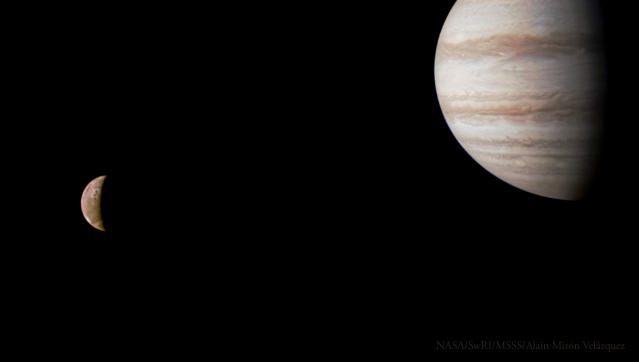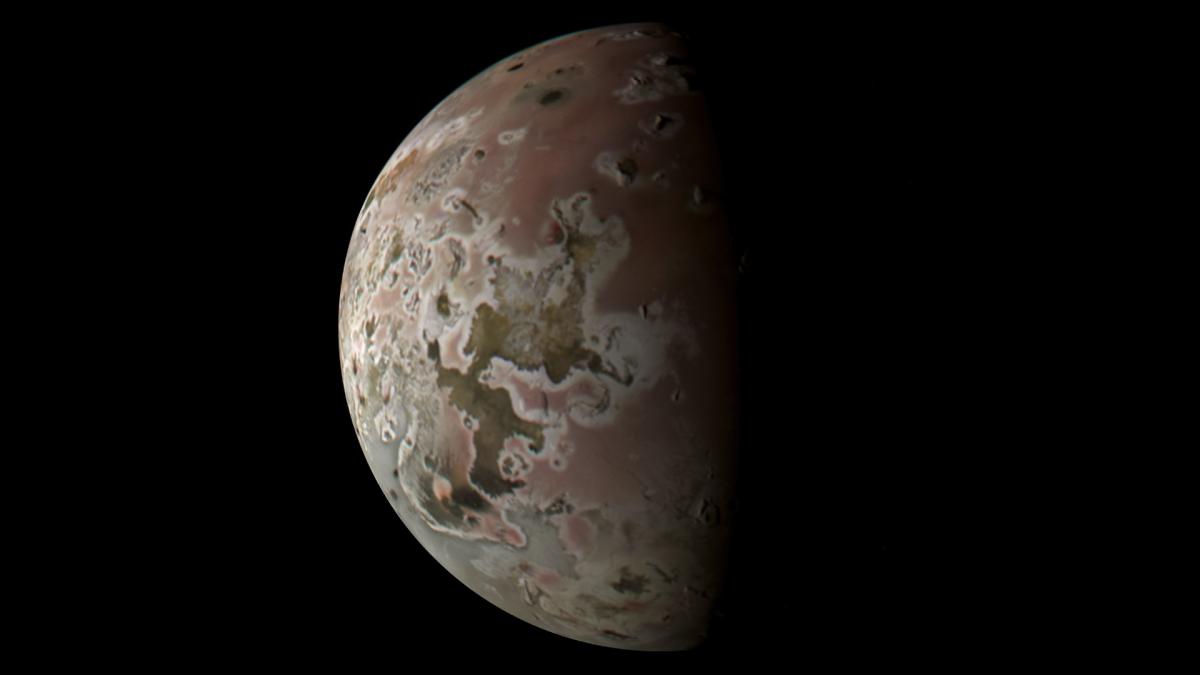NASA’s Juno spacecraft captured high-quality photographs of Jupiter’s volcanic moon Io during a close flyby. The spacecraft, which has been examining Jupiter and its surrounds since 2016, flew within 930 miles of Io’s surface, the closest since NASA’s Galileo in 2001.

Stunning JunoCam Images Reveal Jupiter’s Moon Io: A Volcanic Wonder in Red and Gray
New JunoCam photos depict Io as a dusty red planet with enormous grayish volcanoes. Despite radiation damage to the JunoCam imager, astronomers and stargazers praised the photographs as “magnificent” and “beautiful.”
The solar system’s most volcanic planet is Io. NASA scientists hope to use this flyby and earlier observations to understand the moon’s dynamic volcanic activity.
Juno’s main investigator Scott Bolton said, “We are looking for how often they erupt, how bright and hot they are, how the lava flow shape changes, and how Io’s activity is connected to Jupiter’s magnetosphere.”
READ ALSO: A star is born … and then what? A journey through the life cycle of a star
Juno’s Stunning Flyby of Jupiter’s Moon Io Offers Rare Glimpse into Volcanic Mysteries
As in the previous encounter, Juno will fly close to Io again on February 3. Continuing Io exploration allows scientists to better comprehend the moon’s geology and volcanic eruptions.
The 2016 Juno mission is projected to end in late 2025. Over the weekend, the spacecraft passed Io, providing a rare opportunity to investigate the moon’s volcanoes and contribute to research.
NASA’s Juno spacecraft’s near flyby of Jupiter’s moon Io has produced stunning photographs for astronomers and enthusiasts. Before Juno’s 2025 mission ends, other flybys will investigate Io’s volcanic eruptions and their relationship to Jupiter’s magnetosphere.
READ ALSO: Take a look at these astonishing new images of Jupiter’s volcanic moon Io

Leave a Reply